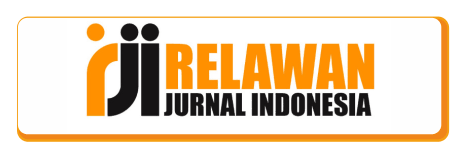Solution-Focused Brief Counseling: An Effective Strategy for Reducing Anxiety During School Exams
 Abstract views: 522
,
Abstract views: 522
,
 PDF downloads: 438
PDF downloads: 438
Abstract
This study explores the effectiveness of brief solution-focused counseling (SFBC) in reducing exam anxiety in students. Exam anxiety is one of the factors that can interfere with students' mental health and academic performance. SFBC, as a solution- and outcome-oriented approach, relies on students' internal and external resources and has been proven effective in the school context. Through techniques such as problem-free talk, magic questions, scaling questions, exclusion questions, marking minefields, and formulaic first session tasks, this study aims to identify strategies that can reduce students' exam anxiety. The method used is Systematic Literature Review (SLR) to determine the effectiveness of using SFBC in reducing students' exam anxiety. The results showed that SFBC is effective in reducing students' exam anxiety by emphasizing the development of counseling strengths and resources. The conclusion of this study is that SFBC is an efficient and effective therapeutic approach to help reduce student exam anxiety.
Downloads
References
Alnuzaili, E. S., & Uddin, N. (2020). Dealing with Anxiety in Foreign Language Learning Classroom. Journal of Language Teaching & Research, 11(2).
Altundağ, Y., & Bulut, S. (2019). The effect of solution-focused brief counseling on reducing test anxiety. Avances En Psicología Latinoamericana, 37(1), 1–12.
Apriliana, I. P. A., Suranata, K., & Dharsana, I. K. (2019). Mereduksi kecemasan siswa melalui konseling cognitive behavioral. Indonesian Journal of Educational Counseling, 3(1), 21–30.
Blanchard, D. C., Griebel, G., & Nutt, D. J. (2011). Handbook of anxiety and fear. Elsevier.
Corey, G. (2015). Theory and practice of group counseling. Cengage Learning.
De Shazer, S., & Dolan, Y. (2012). More than miracles: The state of the art of solution-focused brief therapy.
Fitriyani, H. (2021). Faktor–Faktor Kecemasan Siswa Dalam Pembelajaran Jarak Jauh Di Masa Pandemi Covid-19. JCOSE Jurnal Bimbingan Dan Konseling, 4(1), 10–15.
Gumilang, G. S. (2020). Using Solution Focused Brief Counseling to Reduce Axienty in Facing the Examination Vocational High School Students. International Research Journal Of Multidisciplinary Studies, 6(3), 1–14.
Hammoud, M. S., Bakkar, B. S., Shendi, Y. A. A., & Al Rujaibi, Y. S. (2019). The relationship between alexithymia and career decision-making self-efficacy among Tenth and Eleventh-grade students in Muscat Governorate. COUNS-EDU: The International Journal of Counseling and Education, 4(2), 45–58.
Hidayah, N., Ramli, M., Kirana, K. C., Hanafi, H., Yunita, M., & Rofiqoh, R. (2023). Conceptual Design of Digital Anxiety Detection-Tools for Students School Anxiety. International Conference on Educational Management and Technology (ICEMT 2022), 335–341. Atlantis Press.
Hurlock, E. B. (2006). Perkembangan Anak, Jilid 2.
Kurniawan, K. G., Mappiare AT, A., & Atmoko, A. (2019). Reduksi Keputusan Prokrastinasi Akademik Siswa melalui Teknik Pertanyaan Berskala dalam Konseling Ringkas Berfokus Solusi. Psychocentrum Review, 1(1), 39–46. https://doi.org/10.30998/pcr.117
Maa, X. (n.d.). The Effect of Psychological Control on Students’ Exam Anxiety.
O’Hanlon, B., O’Hanlon, W. H., & Weiner-Davis, M. (2003). In search of solutions: A new direction in psychotherapy. WW Norton & Company.
Ramli, M., Hidayah, N., & Fauzan, L. (2018). Effectiveness of Structured Learning Approach to Improve Counselor Competence in Applying Solutions-Focused Counseling. International Conference on Education and Technology (ICET 2018), 34–37. Atlantis Press.
Ratner, H., George, E., & Iveson, C. (2012). Solution focused brief therapy: 100 key points and techniques. Routledge.
Reissland, N., Froggatt, S., Reames, E., & Girkin, J. (2018). Effects of maternal anxiety and depression on fetal neuro-development. Journal of Affective Disorders, 241, 469–474.
Santrock, J. W. (2012). Life-span development, edisi ketigabelas. Jakarta: Erlangga.
Sartika, E. (2020). Reduksi Kecemasan Menghadapi Ujian Nasional Melalui Islamic Brief Counselling Pada Siswa. Syi’ar: Jurnal Ilmu Komunikasi, Penyuluhan Dan Bimbingan Masyarakat Islam, 3(2), 81–
https://doi.org/10.37567/syiar.v3i2.618
Sharma, A., Singh, S. P., Shekhar, S., Kushwaha, P., & Gahlot, A. (2023). Exam Anxiety and Its Associated Risk Factors Among Indian Medical Undergraduates. National Journal of Community Medicine, 14(06), 348–356.
Sklare, G. B. (2014). Brief counseling that works: A solution-focused therapy approach for school counselors and other mental health professionals. Corwin Press.
Soelaeman, M. (2010). Ilmu Budaya Dasar. PT Refika Aditama, Bandung.
Stackpole, A. I., & Quiroga-Garza, A. (2023). Overcoming Stage Anxiety with a Solution-Focused Approach. Journal of Dance Education, 23(3), 200–212. https://doi.org/10.1080/15290824.2023.2233969
Wahyudin, H. (2022). Konseling Kelompok Pendekatan Solution Focused Brief Counseling (SFBC) Untuk Mengembangkan Resiliensi Akademik Peserta Didik Di Masa Pandemi Covid-19. Universitas Pendidikan Indonesia.
Walter, J. L., & Peller, J. E. (2013). Becoming solution-focused in brief therapy. Routledge.
Wardana, A. Y., Rahman, D. H., & Multisari, W. (2023). Konseling Kelompok Ringkas Berfokus Solusi untuk Menurunkan Prokrastinasi Akademik Siswa SMP. Buletin Konseling Inovatif, 3(1).
Windura, S. (2008). Brain Management Series For Learning Strategy Be An Absolute Genius. Panduan Praktis Learn How To Learn Sesuai Cara Kerja Alami Otak. Jakarta: PT Elex Media Komputindo.
Wood, D. (2007). Kiat mengatasi gangguan belajar. Yogyakarta: Katahati.
The journal operates an Open Access policy under a Creative Commons Non-Commercial 4.0 International license. Authors who publish with this journal agree to the following terms:
- Authors retain copyright and grant the journal right of first publication with the work simultaneously licensed under a
 Commons Attribution-NonCommercial 4.0 International License
Commons Attribution-NonCommercial 4.0 International Licensethat allows others to share — copy and redistribute the material in any medium or format, and adapt — remix, transform, and build upon the material.
- Authors are able to enter into separate, additional contractual arrangements for the non-exclusive distribution of the journal's published version of the work (e.g., post it to an institutional repository or publish it in a book), with an acknowledgement of its initial publication in this journal.
- Authors are permitted and encouraged to post their work online (e.g., in institutional repositories or on their website) prior to and during the submission process, as it can lead to productive exchanges, as well as earlier and greater citation of published work (see The Effect of Open Access).



















